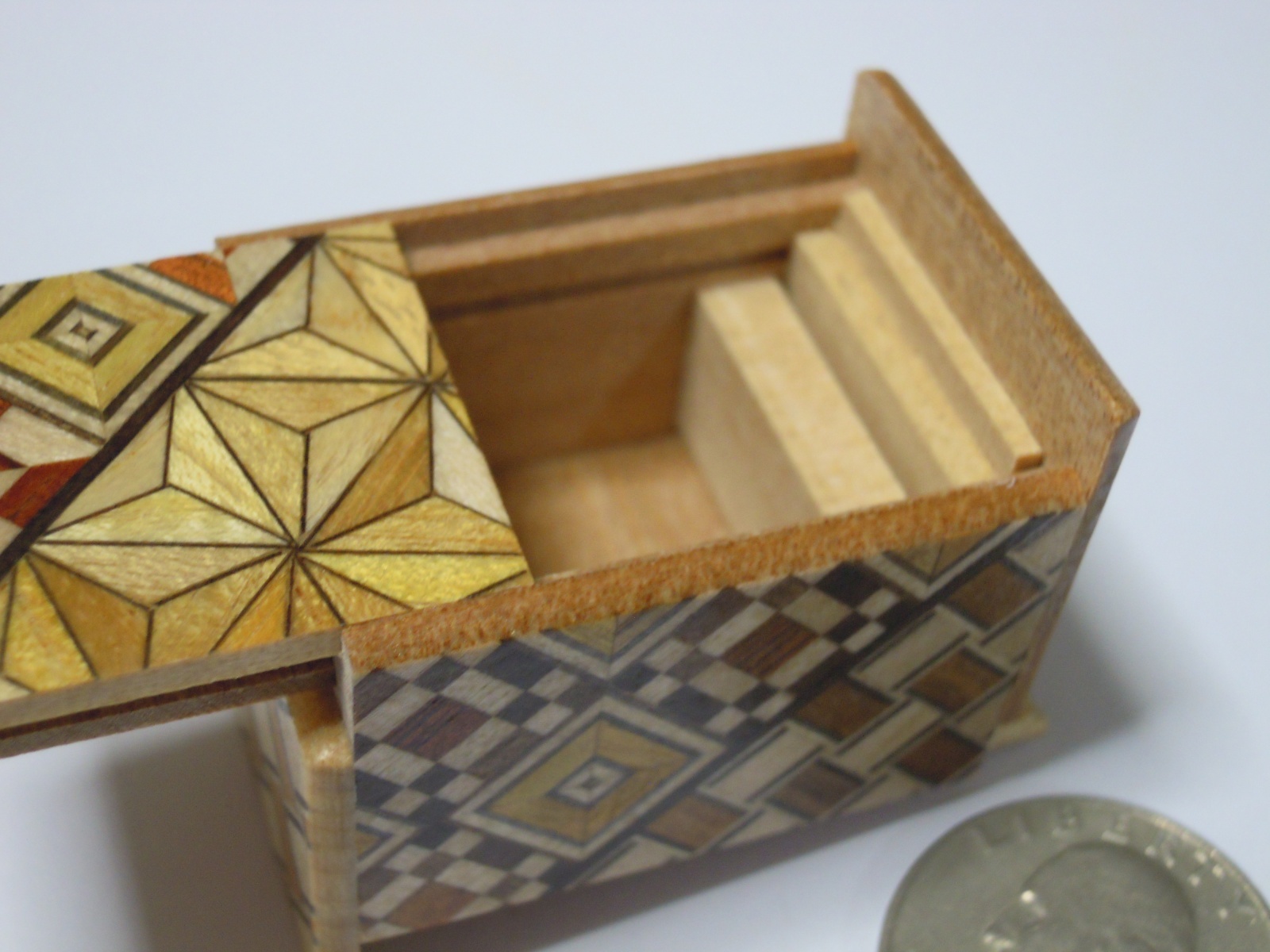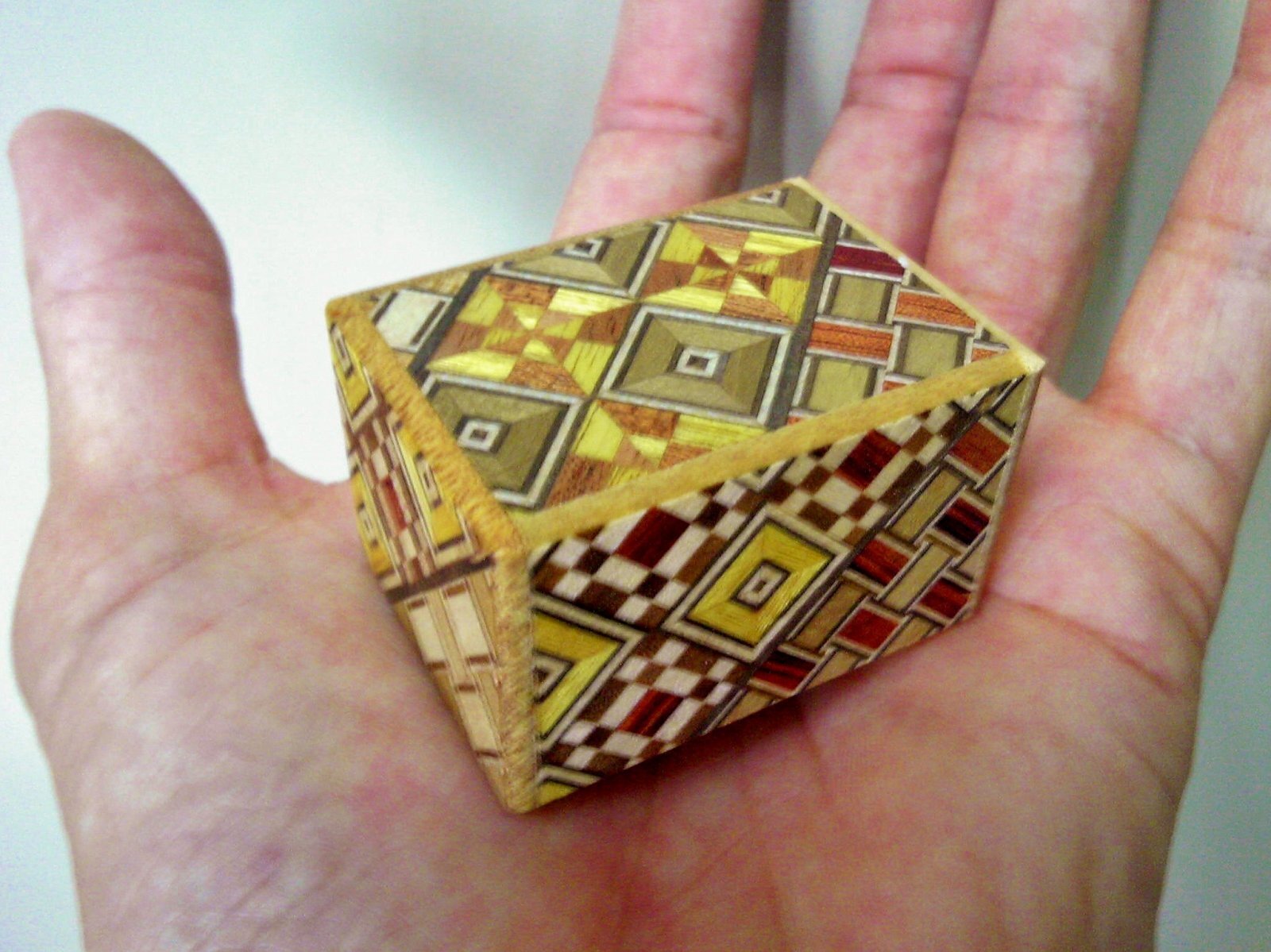Mame 10 steps box
The temperature in my area has become much cooler since yesterday. During the day, it doesn't even reach 30°C, and in the mornings and evenings, it feels a bit chilly. It seems like autumn is finally arriving (hopefully... 😂). It's also made working hours more comfortable.
I’m currently working on the 5-sun 27-step Japanese puzzle box, but I’m planning to prepare for my next project, which will be the Mame (1-sun) 10-step puzzle boxes. Most of this order is from the Hakone market, but some will be going to overseas stores.
As far as I know, the 10-step mechanism in the Mame puzzle box is my original design. Mame puzzle boxes existed before I started making them, but there didn’t seem to be a 10-step version. Well, since there was already a 14-step version, the craftsmen at the time might not have felt the need to create a 10-step version.
These Mame puzzle boxes were originally made by master craftsmen before I started making them. They were sold as products in places like Hakone, but it seems that at first, they were made more as a kind of "play" or experiment. In other words, while crafting regular Japanese puzzle boxes, they would use the leftover small pieces of wood to make these tiny, cute puzzle boxes. It’s similar to how miniatures of industrial products are made today. They seemed to enjoy the challenge of creating intricate mechanisms on a smaller scale.
I initially made a 14-step Mame puzzle box. One of my senior craftsmen brought me a 14-step Mame puzzle box made by a master and suggested I try making one myself. At that time, the masters had either retired or passed away, and there were no craftsmen making Mame puzzle boxes. So, I created detailed drawings and took precise measurements to recreate it. However, while the shape was the same, the mechanism's movements were completely different. Since all the parts of the Mame puzzle box are so small, I realized I had to use softer wood. As I mentioned yesterday, the Mame puzzle boxes made by the masters were crafted from "Katsura wood". Since it’s difficult to continue using Katsura wood today, I select the softer parts of Agathis wood. After that, I went on to create a 4-step, 22-step, and eventually developed a new 10-step version. and 7 ~ 8 years ago, I also started making an 18-step version, which, as far as I know, 18-step version was also favored by the masters.
I’m currently working on the 5-sun 27-step Japanese puzzle box, but I’m planning to prepare for my next project, which will be the Mame (1-sun) 10-step puzzle boxes. Most of this order is from the Hakone market, but some will be going to overseas stores.
As far as I know, the 10-step mechanism in the Mame puzzle box is my original design. Mame puzzle boxes existed before I started making them, but there didn’t seem to be a 10-step version. Well, since there was already a 14-step version, the craftsmen at the time might not have felt the need to create a 10-step version.
These Mame puzzle boxes were originally made by master craftsmen before I started making them. They were sold as products in places like Hakone, but it seems that at first, they were made more as a kind of "play" or experiment. In other words, while crafting regular Japanese puzzle boxes, they would use the leftover small pieces of wood to make these tiny, cute puzzle boxes. It’s similar to how miniatures of industrial products are made today. They seemed to enjoy the challenge of creating intricate mechanisms on a smaller scale.
I initially made a 14-step Mame puzzle box. One of my senior craftsmen brought me a 14-step Mame puzzle box made by a master and suggested I try making one myself. At that time, the masters had either retired or passed away, and there were no craftsmen making Mame puzzle boxes. So, I created detailed drawings and took precise measurements to recreate it. However, while the shape was the same, the mechanism's movements were completely different. Since all the parts of the Mame puzzle box are so small, I realized I had to use softer wood. As I mentioned yesterday, the Mame puzzle boxes made by the masters were crafted from "Katsura wood". Since it’s difficult to continue using Katsura wood today, I select the softer parts of Agathis wood. After that, I went on to create a 4-step, 22-step, and eventually developed a new 10-step version. and 7 ~ 8 years ago, I also started making an 18-step version, which, as far as I know, 18-step version was also favored by the masters.

